- Home
- Glossary
- What is IPv4? It routes most of today’s internet traffic
What is IPv4? It routes most of today’s internet traffic
IPv4 is the fourth version of the internet protocol, routing most of today’s internet traffic. But its global address supply is depleted.
The short answer to the question, “What is IPv4?”, is that it’s the fourth version of the internet protocol. IP, which stands for internet protocol, is the internet’s principal set of rules for communications.
In place for more than 35 years, the U.S. Department of Defense first deployed it on its ARPANET (Advanced Research Projects Agency Network) in 1983.
Internet protocol version 4, IPv4, is also at a crossroads: its global IP address supply is exhausted. The internet is undergoing a gradual transition to the next version, IPv6, but not without challenges.
In this glossary entry, we’ll explore the basic components of the internet and how they work together, examine the fourth internet protocol version and its modern-day shortcomings, and touch on its IPv6 successor.
Before IPv4, a little more on how the internet works
More details on IP
IP is part of an internet protocol suite, which also includes the transmission control protocol. Together, these two are known as TCP/IP. The internet protocol suite governs rules for packetizing, addressing, transmitting, routing, and receiving data over networks.
IP addressing is a logical means of assigning addresses to devices on a network. Each device connected to the internet requires a unique IP address.
Most networks that handle internet traffic are packet-switched. Small units of data, called packets, are routed through a network. A source host, like your computer, delivers these IP packets to a destination host, such as a server, based on IP addresses in packet headers. Packet-switching allows many users on a network to share the same data path.
An IP address has two parts—-one part identifies the host, such as a computer or other device. And the other part identifies the network it belongs to. TCP/IP uses a subnet mask to separate them.
IP sits at Layer 3, the network layer, in the OSI model. The model divides communication across computer networks into seven abstract layers that each perform a distinct function in network communication. Layer 3 is where routing occurs between different networks.
How DNS fits in the picture
DNS, or domain name system, is the phone book of the internet. It translates domain names that we easily remember, like bluecatnetworks.com, into IP addresses like 104.239.197.100, which are the language of the internet.
DNS allows computers, servers, and other networked devices, each with their unique IP addresses, to talk to each other. And it gets users to the website they’re looking for.
Now, exactly what is IPv4?
IP (version 4) addresses are 32-bit integers that can be expressed in hexadecimal notation. The more common format, known as dotted quad or dotted decimal, is x.x.x.x, where each x can be any value between 0 and 255. For example, 192.0.2.146 is a valid IPv4 address.
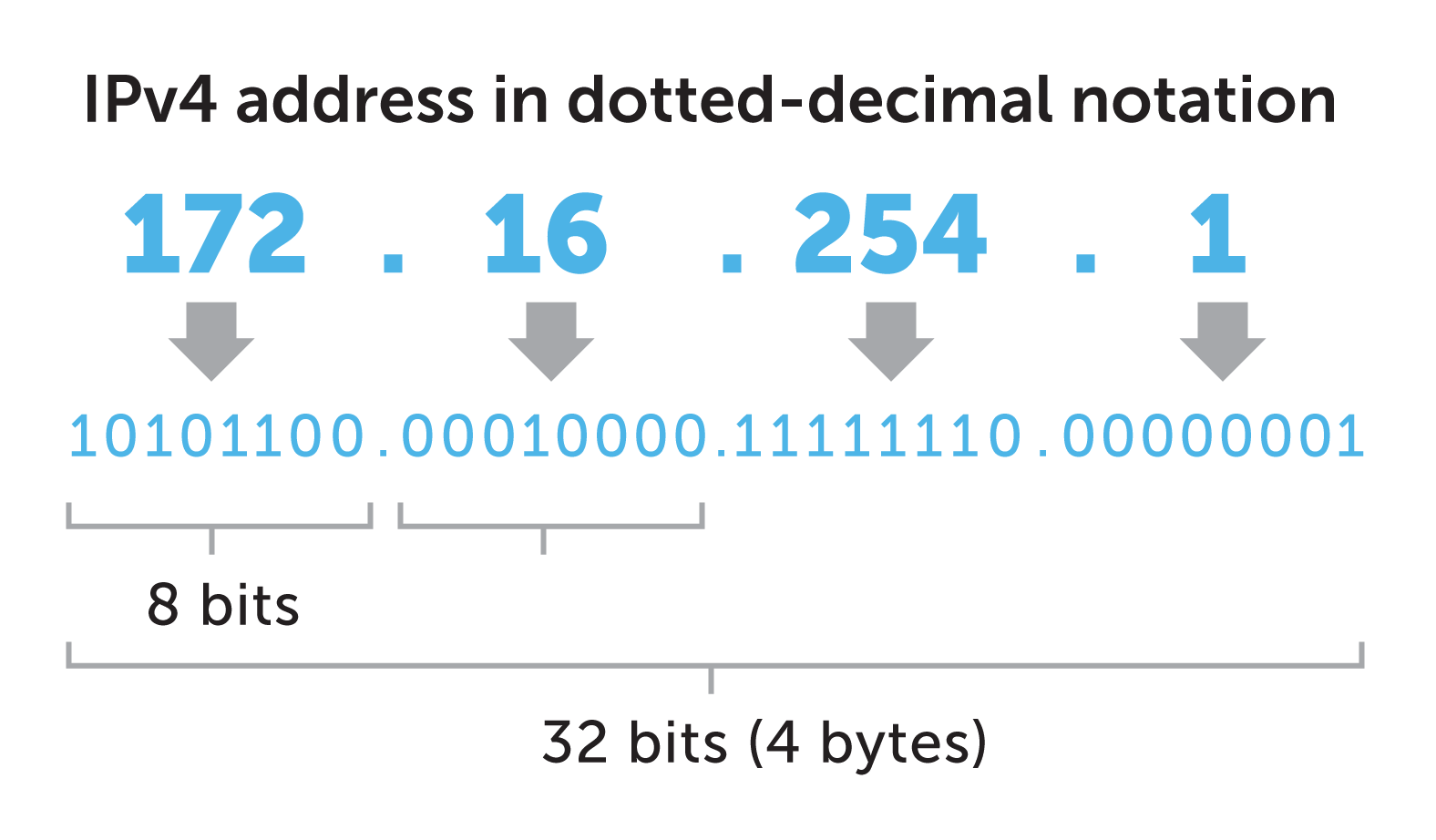
IPv4 still routes most of today’s internet traffic. A 32-bit address space limits the number of unique hosts to 232, which is nearly 4.3 billion IPv4 addresses for the world to use (4,294,967,296, to be exact).
Today, we’ve run out
Think about it: How many connected devices are in your household?
The median American household has five devices, including smartphones, computers and laptops, tablets, and streaming media devices. That doesn’t even include the range of devices that fall under the internet of things (IoT) category, such as connected thermostats, smart speakers, and doorbell cameras.
So, in today’s world of ultra-connected computer networks, where every stationary and mobile device now has an IP address, it turns out that 4.3 billion of them isn’t nearly enough.
In 2011, the Internet Assigned Numbers Authority (IANA), the global coordinator of IP addressing, ran out of free IPv4 address space to allocate to regional registries. IANA then recovered additional unused IPv4 address blocks from the regional registries and created a recovered address pool. In 2014, IANA announced that it was redistributing the last addresses in the recovered address pool.
When it’s tapped, there will be no more IPv4 addresses left.
Additional limitations
Besides running out of address space, the IPv4 addressing system has some additional downsides:
About 18 million addresses were set aside for private addressing, drawn from a range known RFC 1918. Most organizations use private addresses on internal networks. However, devices on these local networks have no direct path to the public internet.
To access the public internet, devices with private addresses require a complex and resource-intensive workaround called network address translation (NAT).
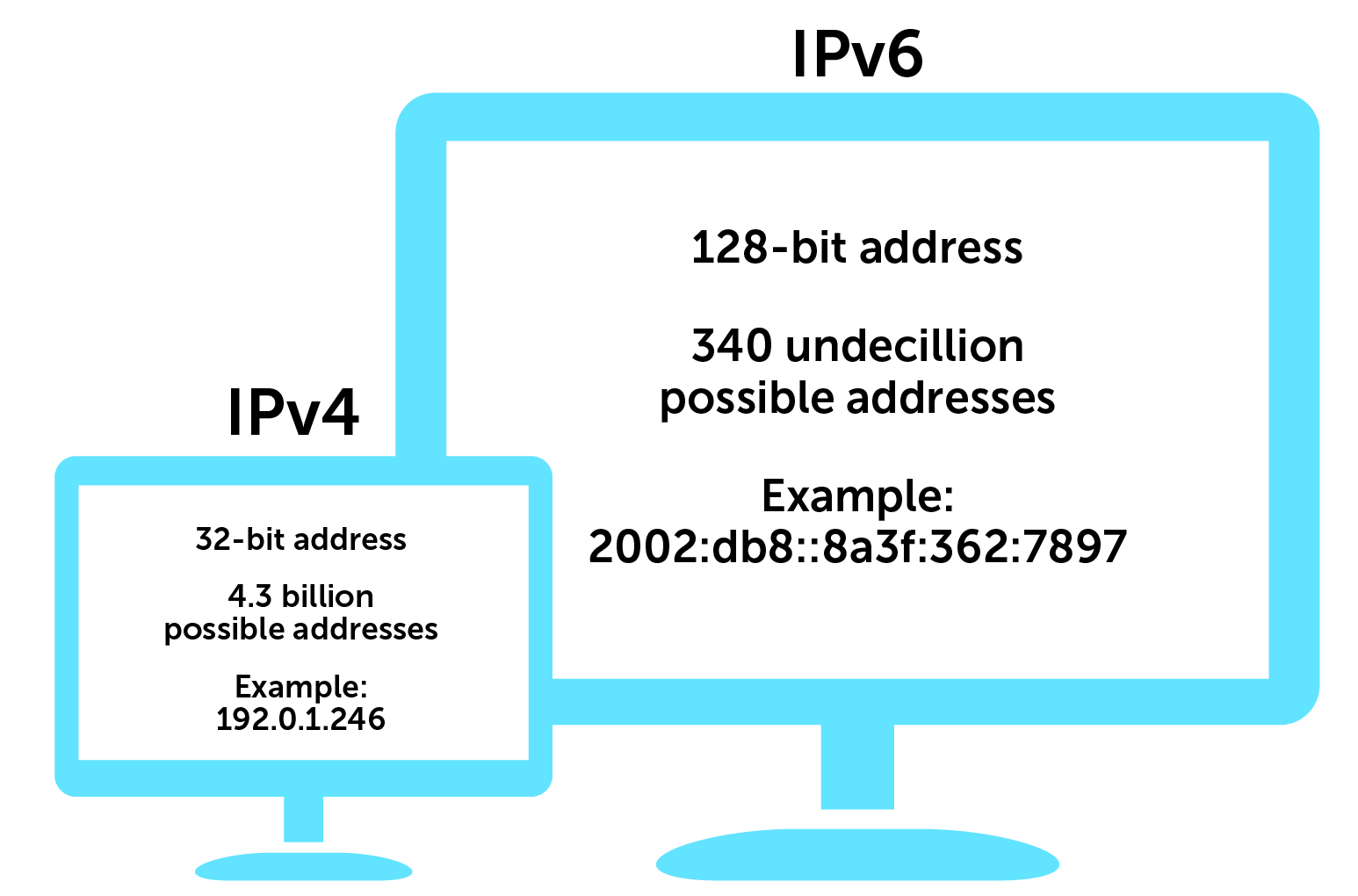
Furthermore, North America got the lion’s share of IPv4 address allocations. As a result, entities in Asia-Pacific and elsewhere, where internet use has exploded, have purchased large chunks of IP space on the gray market. This has broken up contiguous ranges of IP addresses and made it more complicated to route internet traffic.
To replace IPv4, enter IPv6
To address this problem, the internet is undergoing a gradual transition to IPv6. The latest version of the internet protocol, IPv6 internet addressing, moves from 32 bits to a 128-bit address space, with both letters and numbers in identifiers (for example, 2002:db8::8a3f:362:7897). IPv6 has 2128 uniquely identifying addresses, which is about 340 undecillion or 340 billion billion billion.
This version of IP has some obvious advantages, the primary one being that it’s a lot more space. With IPv6, a single network can have more IPv6 addresses than the entire IPv4 address space.
It seems easy enough, but IPv4 and IPv6 are not directly interoperable. IPv6 is not the easiest protocol to walk into. Understanding IPv4 vs IPv6 is a big undertaking fraught with challenges. And when it comes to transitioning to IPv6 DNS, the BlueCat platform is at the ready to help.
Related content
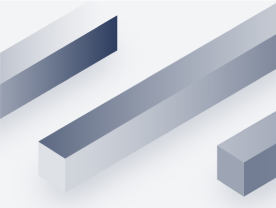
IPv6 DDoS attack is a warning to protect your network
The first IPv6 DDoS attack surfaced in 2018. While IPv6 is more secure than IPv4, if bad actors want to attack your network, they will find a way.
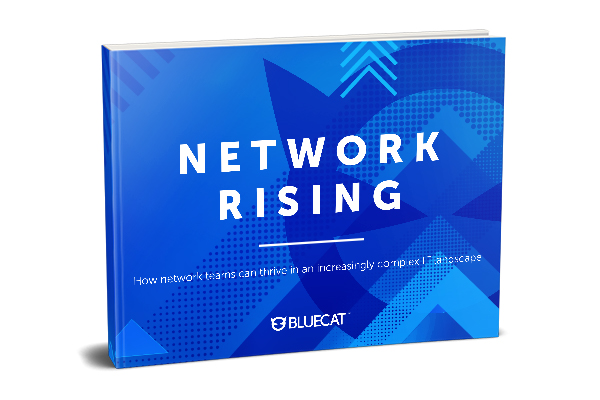
eBook: Network Rising
The gap between what the network team can deliver and what end-users need continues to widen. You need back-end DNS that supports all of your initiatives.

GAO report reveals difficulty of IPv6 migrations
How difficult are IPv6 migrations? A recent GAO report on DOD’s transition plan provides some sobering conclusions.
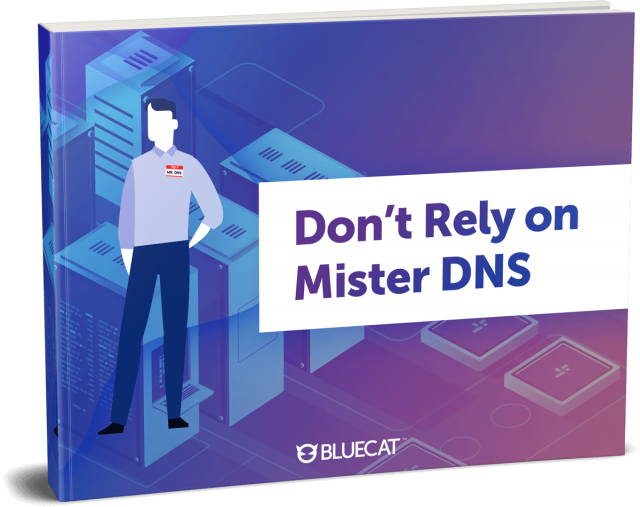
eBook: Don’t Rely on Mr. DNS
You know who they are. They’re the go-to person for everything DNS-related. While that’s a big burden to carry, relying on a single person also puts the…